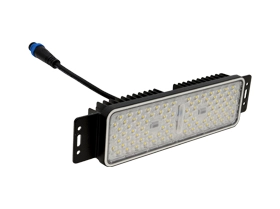Comprehensive Analysis of China LED Garden Light Production
The production of LED garden lights involves multiple stages such as design, material selection, manufacturing, and testing, with an emphasis on energy efficiency, aesthetics, and durability. The market trend is shifting towards intelligence and environmental friendliness.
As an important part of outdoor lighting, garden lights not only add a touch of warm light to the courtyard at night but also carry the functions of beautifying the environment and enhancing the quality of living. So, how are garden lights produced? This article will provide a detailed analysis from multiple perspectives.
Design Stage: Integration of Creativity and Function
The design of LED garden lights is the first step in production and directly determines the appearance, function, and user experience of the product. Garden light manufacturers will draw sketches of the lamps based on customer needs, usage environments, and market trends, and continuously refine the details. In the design process, particular attention needs to be paid to the energy efficiency, waterproofing, durability, and ease of installation of the lamps to ensure that the product meets aesthetic needs while also having good practical performance.
Material Selection: Balancing Quality and Cost
The choice of materials has a crucial impact on the quality and cost of LED garden lights. Common materials for garden lights include metals (such as aluminum alloy, stainless steel), plastic, and glass. Metal material is favored for its excellent thermal conductivity, corrosion resistance, and plasticity, but its cost is relatively high; whereas plastic material occupies a place in the market for its lightweight, easy processing, and lower cost. When selecting materials, garden light manufacturers need to comprehensively consider product performance requirements, cost control, and market demand, striving to find the best balance between quality and cost.
Manufacturing Process: Fine Craftsmanship and Quality Control
The manufacturing process of garden lights includes stamping, welding, spraying, assembly, and many other stages. Each stage requires strict quality control to ensure the overall quality of the product. For example, in the stamping stage, the accuracy of the size and surface smoothness of metal parts must be ensured; in the spraying stage, appropriate paint and technology should be selected to achieve good appearance and anti-corrosion performance. In addition, the production process must also comply with environmental protection requirements to reduce the use and emission of harmful substances.
Testing and Inspection: Ensuring Product Safety and Reliability
The finished LED garden lights must undergo strict testing and inspection to ensure their safety and reliability. The testing content usually includes electrical performance testing (such as insulation resistance and pressure testing), optical performance testing (such as luminous flux, luminous efficiency, and color temperature), and environmental adaptability testing (such as waterproofing, dustproofing, and weather resistance testing). Only lamps that pass all tests can be classified as qualified products and enter the market for sale.
Market Trends: Parallel Development of Intelligence and Environmental Friendliness
With technological progress and the continuous upgrading of consumer demand, the LED garden light market is moving towards intelligence and environmental friendliness. Intelligent garden lights can be remotely controlled via a mobile app to switch on and off, adjust brightness, change colors, and more, providing users with a more convenient and comfortable lighting experience; environmental friendliness requires that the lamps use more efficient light-emitting elements and more environmentally friendly materials and processes to reduce energy consumption and pollution. These trends will guide garden light manufacturers to continuously innovate and improve products to meet market demands.
 English
English  العربية
العربية  中文
中文
 日本語
日本語
 Deutsch
Deutsch
 Türkçe
Türkçe



